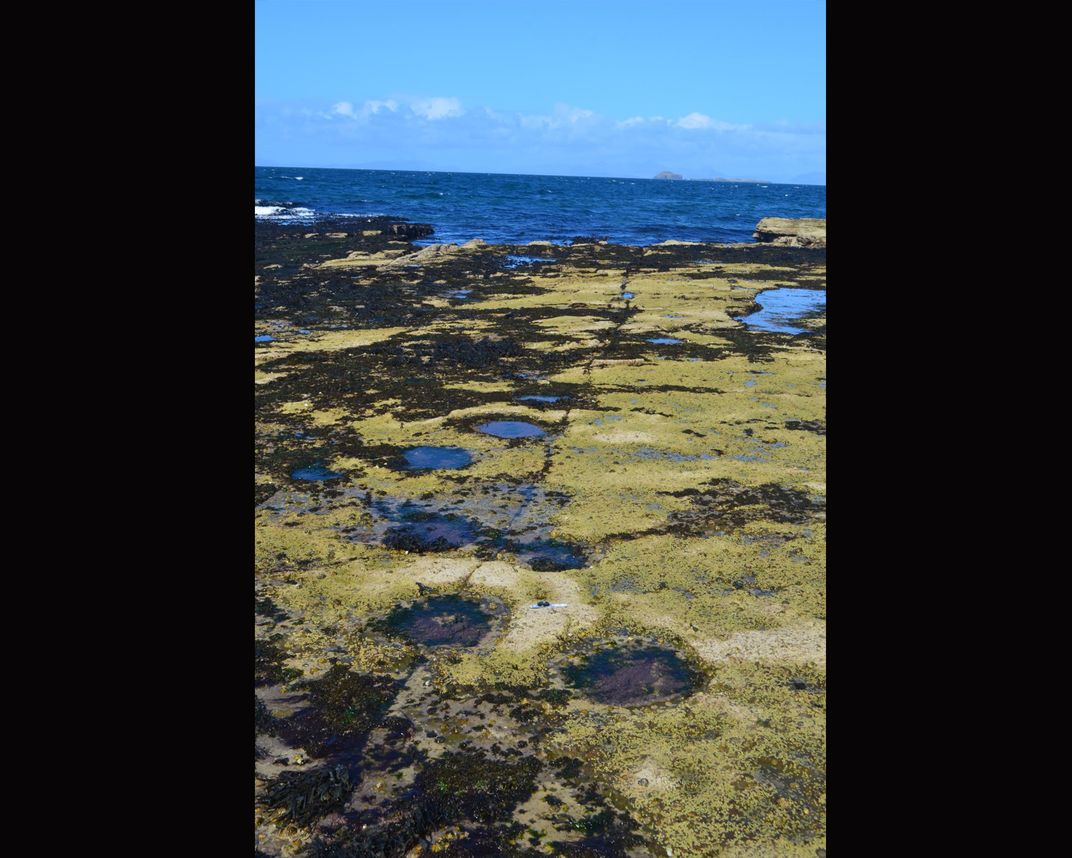Hundreds of Dinosaur Tracks Discovered Along the Scottish Coast
Giant sauropods once roamed the Isle of Skye
/https://tf-cmsv2-smithsonianmag-media.s3.amazonaws.com/filer/83/07/8307bf17-63be-4ab3-94c2-d4f98342131c/scotland_sauropod.jpg)
The Loch Ness Monster may be a myth, but Scotland was once home to some of the largest dinosaurs to ever walk the Earth. Recently, paleontologists uncovered hundreds of fossilized footprints on the beach of the Isle of Skye made as giant sauropods wandered through an ancient swamp.
At a glance, the find might look like a bunch of potholes worn into rocks at the ocean’s edge. But during the Middle Jurassic period, this site was a brackish lagoon home to long-necked sauropods that grew up to 50 feet long and weighed about 20 tons, Rachel Feltman reports for the Washington Post.
"The new tracksite from Skye is one of the most remarkable dinosaur discoveries ever made in Scotland," University of Edinburgh paleontologist Steve Brusatte said in a statement. "There are so many tracks crossing each other that it looks like a dinosaur disco preserved in stone. By following the tracks you can walk with these dinosaurs as they waded through a lagoon 170 million years ago, when Scotland was so much warmer than today."
The find sheds light on a period of history that scientists know little about. The Middle Jurassic “is one of the most poorly understood time intervals in dinosaur evolution” because it’s rare to find dinosaur bones preserved in rocks from that time, Brusatte tells Brian Switek for National Geographic.
Although it’s impossible for researchers to determine what species made the tracks without finding a skeleton nearby, the tracks are detailed enough that Brusatte and his colleagues could identify them as belonging to sauropods like Cetiosaurus, an early cousin of the Brontosaurus. But what really intrigued the scientists was that the footprints showed that these dinosaurs spent at least some of their time tromping through water.

Because sauropods were so massive, paleontologists assumed for years that the long-necked plant-eaters couldn’t support their own weight and spent most of their time wading around swamps and coastal areas, Brusatte tells Will Dunham for Reuters. That theory was tossed out during the 1970s and ‘80s when new fossil finds indicated that sauropods could wander about on land perfectly well. Now, thanks to this find and other similar fossil sites, Brusatte believes that while these dinosaurs mostly lived on land, they probably spent a fair amount of time in the water after all.
"Maybe these lagoons were a ready source of food, or offered protection from predators. But regardless of the answer, this discovery and the other recent ones are inspiring us to re-imagine the lifestyles of these most incredible of ancient creatures," Brusatte tells Dunham.
Whatever the reason these dinosaurs were wandering around the Scottish coast, these footprints show that scientists still have a lot to learn about these giant reptiles.